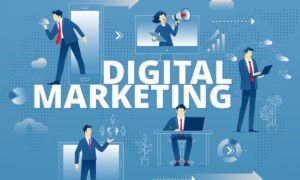Technology’s impact on healthcare is nothing short of revolutionary. From wearable devices tracking our health in real-time to AI-powered diagnostics reshaping patient care, we’re witnessing a transformation that’s improving outcomes and accessibility. As innovation accelerates, it’s clear that technology isn’t just a tool—it’s becoming the backbone of modern healthcare solutions.
We live in a world where breakthroughs like telemedicine and robotic surgeries are no longer futuristic concepts. These advancements are bridging gaps in care and empowering both patients and providers. It’s an exciting time to explore how these solutions are reshaping the way we approach health and wellness.
Understanding The Role Of Technology In Transforming Healthcare Solutions
Technology plays a vital role in redefining healthcare systems by improving diagnosis accuracy, treatment efficiency, and overall patient care. AI-driven tools analyze vast datasets to detect diseases like cancer at earlier stages, leading to better outcomes. Telemedicine expands access to care by connecting patients with physicians across geographical barriers, addressing both rural and urban health disparities.
Wearable devices, like smartwatches and fitness trackers, empower individuals to monitor health metrics such as heart rate, oxygen levels, and physical activity. Providers integrate this data into personalized care plans, fostering preventive healthcare approaches. Robotic surgeries, using precision-assisted devices, minimize invasiveness, which results in shorter recovery times and reduced risks. Check out healthcare technology software for compliance software from Ourrecords to ensure secure data management and regulatory adherence in the evolving digital healthcare landscape.
In supply chain management, platforms streamline processes like inventory tracking and resource allocation. For instance, systems similar to MainClinicSupply enhance efficiency in procuring and distributing critical medical supplies. These technologies contribute to operational resilience and preparedness during health crises.
By interconnecting digital solutions, healthcare systems create a unified approach to tackling challenges. These advancements not only prioritize patient-centric care but also address efficiency gaps in traditional medical practices, ensuring broader access and better quality of services.
Innovations In Healthcare Through Technology
Technology continues to drive advancements in healthcare, bridging gaps in care delivery and enhancing patient outcomes. Emerging tools and systems demonstrate the transformative potential of digital health solutions.
Telemedicine And Remote Monitoring
Telemedicine improves access to healthcare by connecting patients with providers through virtual consultations. These solutions reduce travel barriers and ensure that individuals, especially in remote areas, receive timely medical advice. Remote patient monitoring enables real-time tracking of chronic conditions like diabetes and hypertension using connected devices, ensuring prompt intervention when necessary. These technologies integrate seamlessly into treatment workflows, reducing hospital visits and optimizing health management.
Artificial Intelligence And Machine Learning
AI and machine learning enhance diagnostic precision and streamline administrative processes. Machine learning algorithms analyze complex data to identify patterns in diseases like cancer, yielding accurate early-stage diagnoses. Predictive analytics supported by AI helps forecast patient needs, guiding resource allocation. AI also plays a role in drug development, reducing the time required for clinical trials and speeding up therapeutic advancements.
Wearable Devices And Health Trackers
Wearables like smartwatches and fitness monitors empower users to track vital metrics such as heart rate, sleep patterns, and physical activity. These devices sync with healthcare providers’ systems, enabling data-driven care strategies. By offering continuous data on conditions like arrhythmias or apnea, wearables support early interventions. Health trackers promote preventive care, fostering healthier lifestyles while providing insights that contribute to improved decision-making in clinical settings.
Benefits Of Technology-Driven Healthcare
Technology-driven healthcare enhances patient outcomes, improves access, and optimizes cost efficiency. It transforms traditional systems, prioritizing innovative solutions that tackle current challenges.
Enhanced Patient Care And Accessibility
Digital tools like telemedicine expand healthcare access by connecting patients with providers, regardless of location. Remote monitoring systems allow real-time tracking of vitals, ensuring timely interventions for conditions like diabetes or heart disease. Wearable devices, such as fitness trackers and smartwatches, empower individuals to manage health proactively. Integration of these tools into care plans ensures continuous support for patients while bridging gaps in accessibility. Hospitals using smarter tech solutions can cater to broader populations and underserved communities.
Improved Diagnostics And Treatment Plans
AI and machine learning applications analyze complex data to detect early signs of diseases, including cancer and neurological disorders. Advanced imaging tools offer precise diagnostics, minimizing misdiagnoses and enabling personalized treatments. Predictive analytics guides treatment by forecasting disease progression, ensuring plans are tailored to patient needs. Robotic surgeries enhance precision during procedures, reducing complications and recovery times. Combining these technological solutions enhances diagnostic accuracy and empowers healthcare providers to deliver optimized care.
Cost Efficiency And Operational Improvements
Streamlining operations through technology lowers healthcare costs and improves efficiency. Automation reduces administrative workloads, allowing healthcare professionals to prioritize patients. Predictive analytics optimizes resource allocation by forecasting demands on staff, diagnostic equipment, and infrastructure during peak periods. During procurement, platforms like MainClinicSupply enhance supply chain management through real-time tracking and inventory insights, preventing shortages or delays. These systems ensure reduced wastage, lower costs, and greater operational resilience in managing health services.
Challenges In Adopting Healthcare Technology
Although healthcare technology offers transformative potential, its adoption presents notable challenges that impede seamless integration into medical systems.
Data Privacy And Security Concerns
Data privacy and cybersecurity are critical issues in healthcare technology adoption. Digital tools such as electronic health records (EHRs), telemedicine platforms, and wearable devices collect sensitive patient information, making systems vulnerable to breaches. Cyberattacks targeting healthcare surged by 55% in 2021, according to CheckPoint Research, exposing confidential data. Organizations need robust encryption, multi-factor authentication, and compliance with regulations like HIPAA to mitigate risks. Furthermore, ensuring secure data sharing between facilities without compromising patient confidentiality complicates technology integration. Protecting systems from unauthorized access remains a top priority for maintaining trust in digital healthcare solutions.
Resistance To Change And Training Needs
Adopting healthcare technology often faces resistance due to ingrained workflows and limited technical knowledge among medical professionals. Implementing tools like AI-driven diagnostics and digital monitoring systems requires comprehensive training, which can strain resources in understaffed facilities.
A Deloitte study found that 45% of healthcare workers expressed apprehension toward technological changes, citing disruption concerns. Providers may also delay adoption out of uncertainty about long-term benefits or fear of operational disruptions. Ensuring proper training programs and clear communication about the efficiencies these technologies bring is essential for overcoming resistance and improving adoption rates.
The Future Of Technology In Healthcare
According to the World Health Organization, leveraging technology in healthcare has the potential to enhance efficiency and save millions of lives globally. Healthcare technology continues to evolve, offering innovative ways to improve patient care, streamline operations, and enhance access. As advancements emerge, these solutions reshape the future of medical practices worldwide.
Emerging Trends And Opportunities
AI integration in diagnostics and treatment planning represents a significant trend. Tools utilizing machine learning analyze complex data for early detection of diseases like cardiovascular conditions or cancer, enabling precise interventions. Wearable devices, such as smartwatches, provide constant health monitoring and prompt alerts for irregularities, fostering proactive health management.
Telemedicine platforms are expanding globally, bridging gaps in underserved regions and delivering specialized care remotely. Blockchain technology strengthens data security, ensuring patient information remains private and tamper-proof.
These innovations, alongside real-time data integration and robotic surgical systems, present opportunities to create a more connected, efficient, and patient-focused healthcare ecosystem.
The Role Of Policy And Collaboration
Strong policies and collaborations drive successful technology implementation in healthcare. Regulatory frameworks should prioritize protecting patient data while encouraging innovation through clear guidelines. For instance, policies addressing AI applications can mitigate ethical issues and ensure equitable care distribution.
Collaborative efforts streamline processes, enhance supply chains, and scale digital platforms in underserved areas. Programs supporting workforce training and education help professionals adapt to new tools, ensuring seamless integration.
By aligning stakeholder goals and regulatory measures, the healthcare sector can continue adopting transformative technologies while maintaining ethical and operational standards.




































